
This parent guide supports parents in helping their child at home with the 7th grade Social Studies content.
- Subject:
- Social Studies
- Material Type:
- Reference Material
- Vocabulary
- Author:
- Kelly Rawlston
- Letoria Lewis
- Date Added:
- 10/12/2022

This parent guide supports parents in helping their child at home with the 7th grade Social Studies content.

This resource accompanies our Rethink 7th Grade Social Studies course. It includes ideas for use, ways to support exceptional children, ways to extend learning, digital resources and tools, tips for supporting English Language Learners and students with visual and hearing impairments. There are also ideas for offline learning.
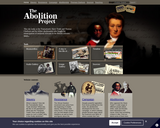
This site looks at those who fought for the ending of the Transatlantic Slave Trade and the emancipation of enslaved Africans in the British colonies. The site has been designed to provide background information, lesson ideas and tools for teachers and learners.

Containing more than 50 articles from the award-winning Tar Heel Junior Historian magazine and over 40 lesson plans, this multidisciplinary Educator Notebook will enrich your exploration of North Carolina and American history with diverse perspectives. This resource's link takes you to a very short form that gives you free downloadable access to the complete PDF book.

A website resource that provides facts and data that documents the forced removal of enslaved persons from Africa and their arrival to North Carolina.
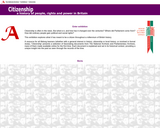
This exhibition explores what it has meant to be a citizen throughout a millennium of British history. Click through to find full documents from each time period, as well as a quiz page.
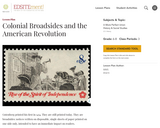
Drawing on the resources of the Library of Congress's Printed Ephemera Collection, this lesson helps students experience the news as the colonists heard it: by means of broadsides, notices written on disposable, single sheets of paper that addressed virtually every aspect of the American Revolution.
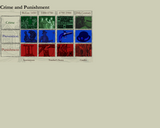
This exhibition covers the themes of crime, prevention, and punishment during different time periods. There are 12 galleries altogether, each with a key question, a worksheet, and a number of case studies.

Why did the German people and the rest of the world allow the Nazi dictatorship to establish itself, label certain groups as "different" or "human", remove individual rights and freedoms from those groups, and violently persecute those sections of society? In this lesson, students explore these questions and more as they use the Holocaust as a context for exploring the dangers of remaining silent, apathetic, and indifferent in the face of oppression of others.
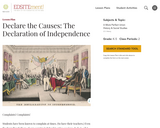
Students read and discuss the Founding Fathers of our country indulgence in gripe sessions. In fact, a list of grievances comprises the longest section of the Declaration of Independence; however, the source of the document's power is its firm philosophic foundation. You can capitalize on the inclination of your students to complain to increase student awareness of the precedents behind the Declaration of Independence. Students will summarize the contributions of the "Founding Fathers" to the development of our county as well as explain how key historical figures exemplified values of American democracy.

In this lesson, students will view the short documentary about current North Carolina resident Peter Stein, a Holocaust survivor who was born in 1936 in Prague, Czechoslovakia to a Jewish father and a Catholic mother, just two years before Nazi occupation. His father was forced into slave labor and later deported to Terezin (Theresienstadt) - a work and death camp - and managed to survive, but his family of eight were all killed. Through the platform of Peter’s moving story, students will explore the realities of life in Terezin, while comparing this to the 1944 propaganda campaign Hitler launched with Terezin at its core. Based on Peter’s insights and words of wisdom, students will then explore what they believe the most important lessons of the Holocaust are by creating their own mural.
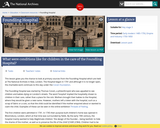
This lesson examines primary sources from the Foundling Hospital in London and poses questions about how things were run and what life was like for a child under their care.
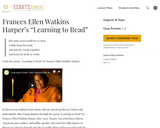
In this lesson students do a close reading of “Learning to Read,” a poem by Francis Watkins Harper about an elderly former slave which conveys the value of literacy to blacks during and after slavery. The activities also prompt students to examine the nature of literacy in the 21st century and the value they put upon it.
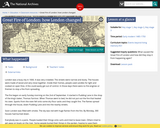
This lesson discusses the Great Fire of London in 1666 and its causes as well as its repercussions long after.
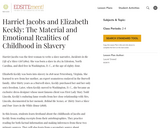
In this lesson, students learn firsthand about the childhoods of Jacobs and Keckly from reading excerpts from their autobiographies. They practice reading for both factual information and making inferences from these two primary sources.

In this lesson, students explore the active citizens who resisted the tyranny and atrocities committed by Hitler and the Nazi party, as well as those who worked to assist and rescue those targeted. Upon exploring these brave people, students will choose a person from the Holocaust who exhibited active citizenship, deliver a speech in their honor, and present them with a citizenship award at a mock reception.

In this lesson, students explore the concept of memory and the various ways people choose to process and share their memories. Focusing on memories from those who experiences the Holocaust, students explore the way various mediums (testimony, art, poetry, etc.) can teach us about the past. Finally, students focus on poetry and art written by children of the terezin concentration camp in which the authors share various memories and write a letter to their chosen child sharing what they wish they could say to him/her.

In this lesson, students learn about non-Jewish victims of the Holocaust. Students work in groups to read excerpts from the 'The Other Victims: First-Person Stories of Non-Jews Persecuted by the Nazis', which highlights the experiences of additional groups deemed undesirable by Hitler, including Gypsies, African-Germans, Jehovah's Witnesses, Poles, political prisoners, and more. Students then connect the themes present in the persecution of these groups to occurrences within their own school and community, gaining an understanding of the danger of intolerance.

Students will receive an overview of the Holocaust via PPT, class discussion, readings, and creative activities. Students will begin by exploring prewar Jewish life, helping them understand that individual lives are behind Holocaust statistics. Students will illustrate their understanding of this period of history by creating a blended poem of their own words and the words of a Holocaust survivor.
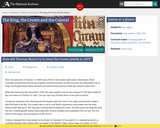
This lesson considers the story of Thomas Blood and encourages students to investigate primary sources to work out how and why he tried to steal the Crown Jewels.